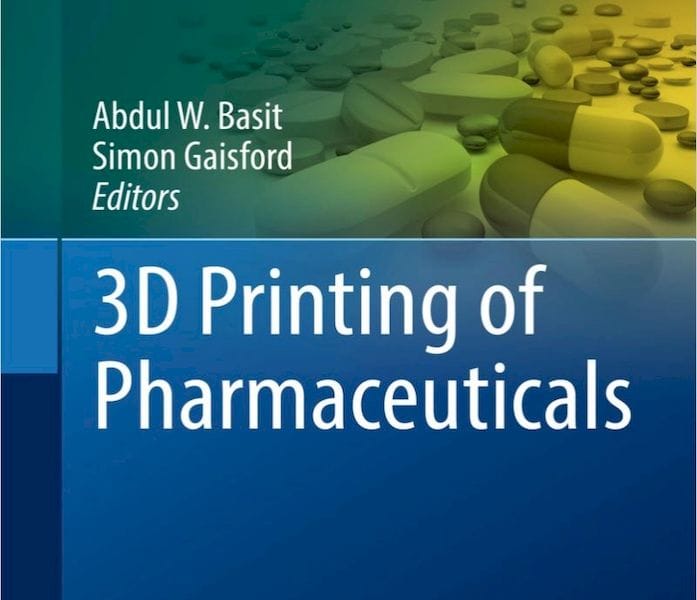![3D Printing of Pharmaceuticals [Source: Amazon]](https://fabbaloo.com/wp-content/uploads/2020/05/image-asset_img_5eb0a7002b627.jpg)
This week’s selection is “3D Printing of Pharmaceuticals” by editors Abdul W. Basit and Simon Gaisford.
The notion of 3D printed drugs may seem a bit strange to most readers of this publication, where 3D printing is most often used to build physical objects or structures, typically for manufacturing, prototyping or art. Drugs to most people are a “pill” that has little uniqueness to its structure. A pill is a pill, isn’t it?
Well, that’s no longer going to be true.
The same principles that have been used to develop modern 3D printing have been applied to the construction of pharmaceuticals. But instead of devising ingenious shapes, instead the ingredients are being varied.
The authors of the book introduce the concept:
“3D printing has expanded into the pharmaceutical sector which has been forecasted to cause a paradigm shift in the way that we design, manufacture and use medicines. Conventional drug delivery system were first introduced around 200 years ago and have generally remained the same in the form of tablets and capsules. With the margins of 3-D printing has come the idea of printable tablets– ‘Printlets’– enabling the production of a wide range of dosage form designs and geometries. “
The book that follows is a selection of articles produced by notable experts in the emerging field of 3D printed pharmaceuticals. Topics include:
-
Emerging applications of 3D printing in healthcare
-
3D printing technologies, implementation and regulation
-
Binder jet printing in pharmaceutical manufacturing
-
The history developments and opportunities of stereolithography
-
Powder bed fusion process and applications
-
Fused deposition modeling advances
-
Semi–solid extrusion printing in clinical practice
-
4D printing opportunities in pharmaceuticals
-
Medical applications of 3D printing
This field is still emerging, but there is so much potential. Imagine preparing a personalized set of pills for a specific patient that led them through a graduated sequence of drug delivery, where the dosages vary by day according to a complex program of activities. Such a regime could not be properly implemented using conventional mass-manufactured drugs, but could, in theory, be easily done with 3D printing.
Just as 3D printing enables personalized objects to be made for an individual, such as perfectly fitting eyeglass frames or sports shoes, the same could be done for that person’s drug requirements. The results would not visibly appear to be much different from any other pill, but for that person, they could be of critical importance.
In the distant future it may also be possible for 3D pharmaceutical devices to prepare drugs on demand for patients, perhaps immediately after testing and diagnosis takes place.
However, in the end patients must still adhere to taking the right drugs at the right time, and that is something that no 3D printer will solve.
Via Amazon











This week’s selection is “3D Printing Projects” by Dorling Kindersley, a.k.a. “DK”.